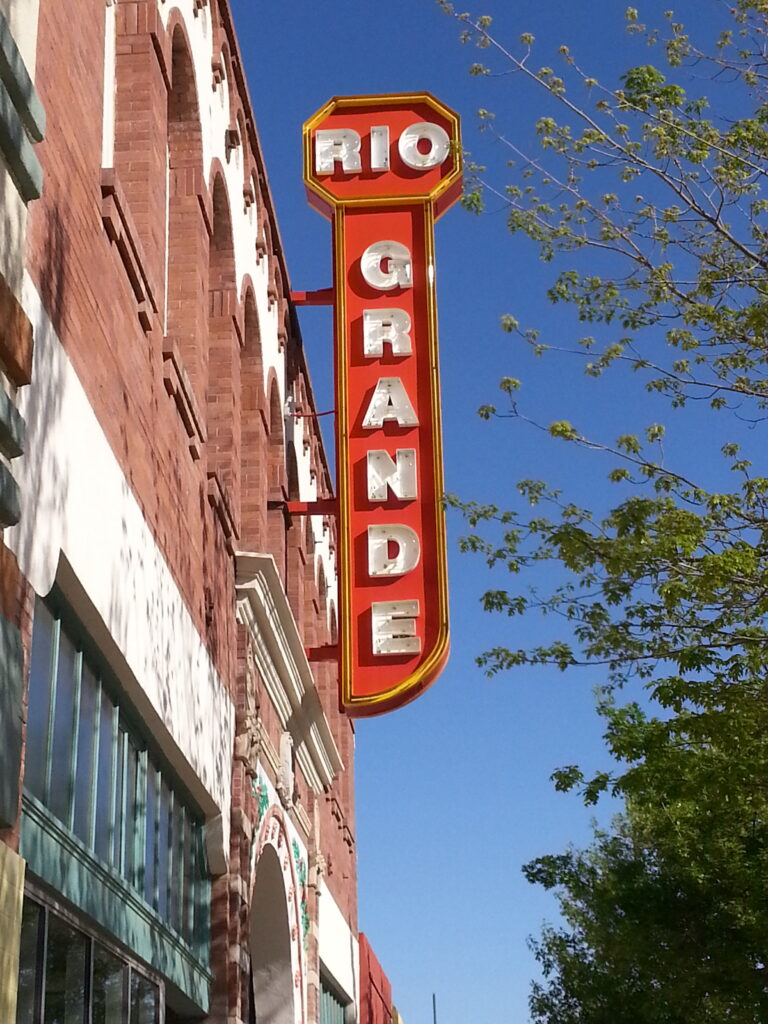Constructed 1926.
The Rio Grande Theatre came to life on July 29, 1926 with the opening of the silent film, Mare Nostrum, (A powerful story of the sea), with pipe organ accompaniment. The original builders of the Rio Grande Theatre were C. T. Seale and B. G. Dyne who acquired the old Hacker Hotel, razed the building, and began construction. Southwest architect Otto Thorman created the look of the Rio Grande Theatre in the Italian Renaissance Revival style popular in the 1920s and 30s. The building survived an earthquake in the early 30s and a fire in 1933. It is a testament to the determination of the builders that, despite the depressed economic state of the nation at the time, they chose to bring back the Rio Grande even more glorious than before. The theatre’s arched second-floor windows and entryway with its bas-relief violins, horns, and foliage were uncovered early in the renovation process. They served as symbols and inspiration for the renovation process. The unique tile work at the base of each column was another hidden treasure uncovered by the removal of the metal front, stucco walls, and marquee.
Small storefronts on the north and south sides of the main entrance have housed a number of different businesses over the years. The interior of the theatre was of the Spanish Baroque style and included white velour wall tapestries with red velvet festoons depicting historical figures. The grande drape was turquoise velvet with a gold plush valance and gold satin applique. The theatre boasted a “washed air” cooling system, basically a large evaporative cooler that employed a system of vents running under the floor and out through the walls. In a bit of trickery, the walls featured real vents and painted vents to give the appearance of more washed air flowing into the facility than actually occurred. Over the years, the Rio Grande Theatre continued to be owned by the same two families, the children and grandchildren of C. T. Seale and B. G. Dyne. In 1998, Jan Clute and Carolyn Muggenburg, granddaughters of C. T. Seale, gifted their portion of the theatre to the Dona Ana Arts Council, and later that year, the Arts Council became sole owner of the property.
The Arts Council envisioned the facility as a performing arts and education venue, as well as a permanent home for the Arts Council. Now the Rio Grande Theatre is a 422-seat, state-of-the-art performing arts facility with a 40′ fly loft, dressing rooms, digital projector, sound and lighting equipment, acoustic panels, refrigerated air, a refurbished lobby, and gallery spaces. It also contains the offices of the Arts Council. Through the dedication of volunteers, board members and staff, the generosity of private individuals, businesses, and government officials, the curtain has been raised at the reborn Rio Grande Theatre.
211 N. Main St. Las Cruces, NM 88001 | 575-523-6403
Photos by Elmo Baca and Amy M. Barnhart.




